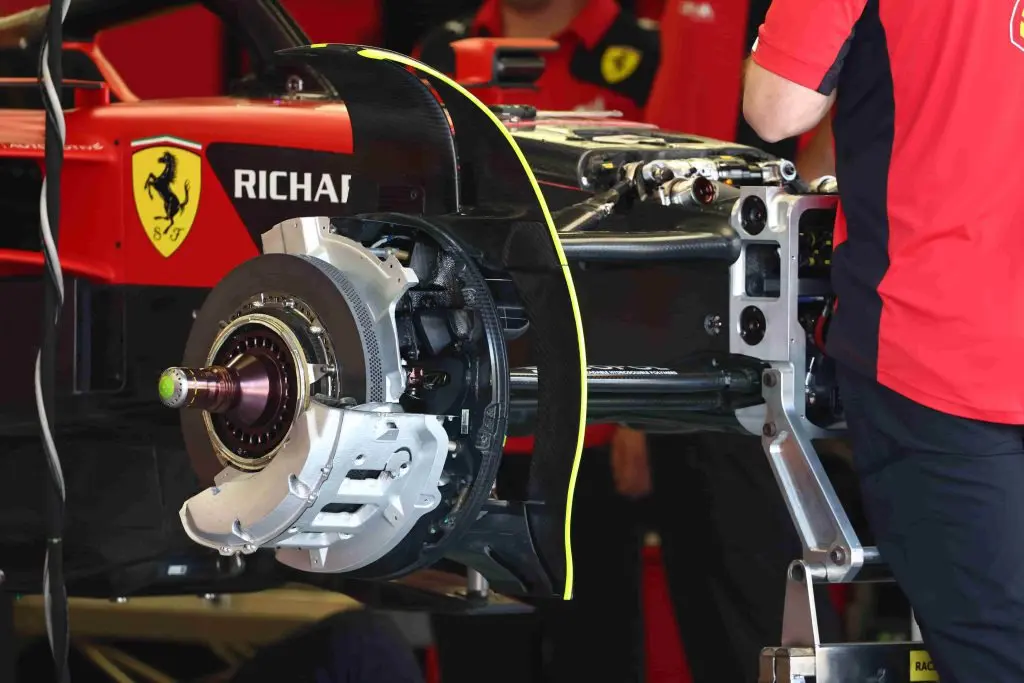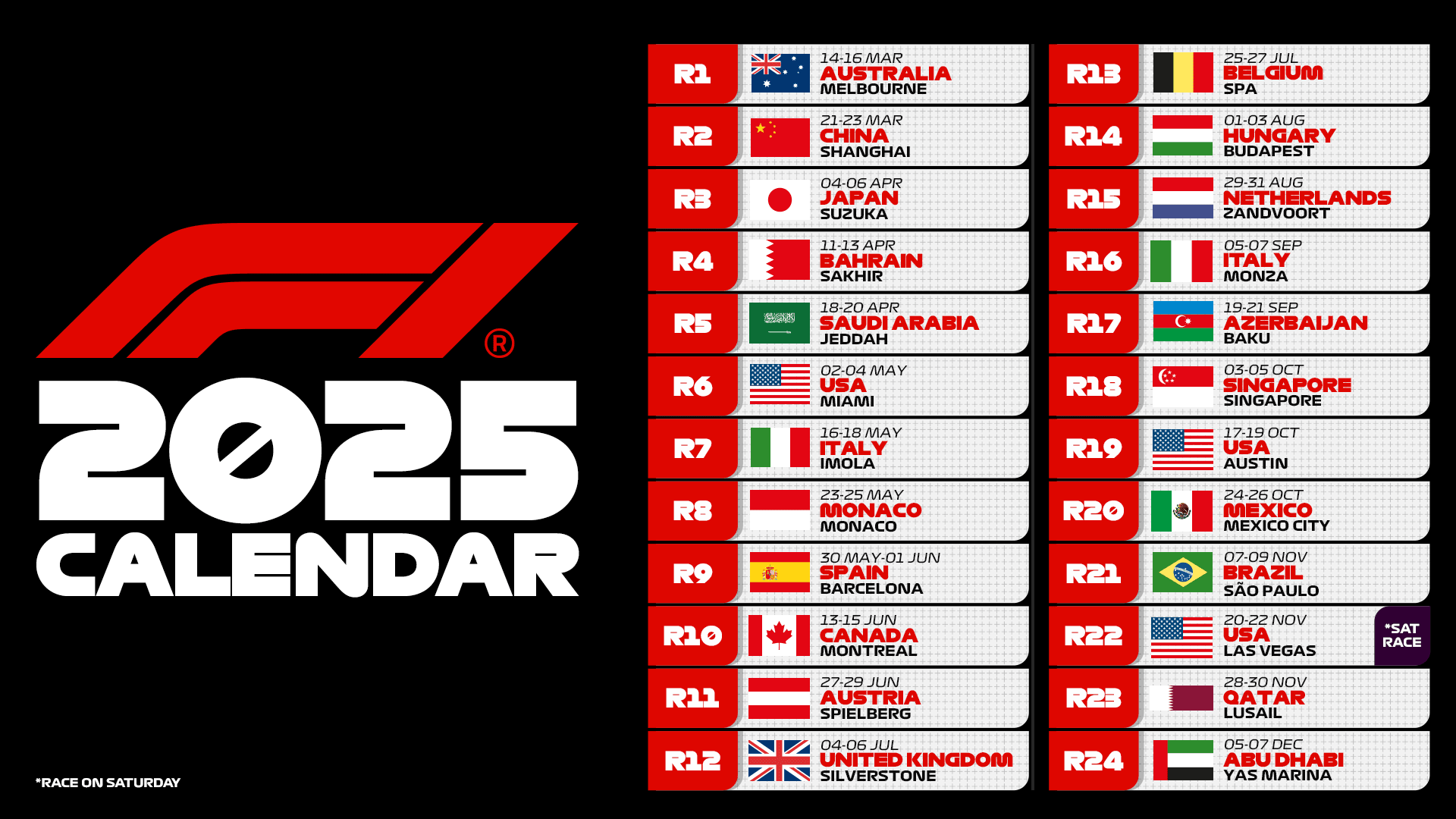
One of the key components of an F1 car is undoubtedly the braking system. This system is perhaps the least talked about among all the essential elements such as the power unit, chassis, suspensions, or aerodynamic structure, but with its straightforward functionality, it brings the cars to a halt. The physical concept utilized to decelerate the single-seaters is the friction generated between the brake pad, driven by the caliper pistons, and the disc.
The contact between these two elements generates heat, which must be properly managed and dissipated. Brembo, the Italian brand, has been supplying the braking system to the teams for many years. The leading manufacturer in this field provides standard components and allows teams to customize only the design of the front and rear calipers.
In current F1 cars, decelerations reached during braking can reach 5g, and the new generation of single-seaters, featuring 18-inch wheels, can accommodate larger diameter brake discs capable of generating superior braking forces. Discs with a larger circular cross-section area are exploited at the same pressure, allowing for a higher applied force.
Made of carbon, a composite material offering strength and lightness, the brake discs feature one of the crucial elements for their operation – ventilation holes. As evident in the following table, larger-diameter discs have allowed for larger ventilation hole measurements. Compared to 2021, CFD analyses of the new brake discs provided better feedback with fewer holes and a larger diameter.

Braking System Comparison: 2021 vs 2023
The “least engineered” component among those listed in the table is the brake pad, a piece of carbon resembling a rectangle with two long curved sides. The brake pad is pushed by the caliper pistons onto the brake disc to slow down its angular velocity through friction. To function properly, it requires effective cooling and high heat dissipation capacity. The caliper is the only customizable element by teams through continuous iteration with Brembo.
Show your support for Scuderia Ferrari with official merchandise collection! Click here to enter the F1 online Store and shop securely! And also get your F1 tickets for every race with VIP hospitality and unparalleled insider access. Click here for the best offers to support Charles and Lewis from the track!
Show your support for Scuderia Ferrari with official merchandise collection! Click here to enter the F1 online Store and shop securely! And also get your F1 tickets for every race with VIP hospitality and unparalleled insider access. Click here for the best offers to support Charles and Carlos from the track!
The material it is made of is a series 7000 aluminum alloy called Ergal with a density of 2.7 kg/cm³. The composition of this alloy includes copper, magnesium, manganese, and silicon to achieve a tensile strength of about 520 MPa at yield. To better understand what we are talking about, we can compare Ergal with a alloyed steel that has a density of 7.8 kg/dm³.
The technical regulations in force since 2022 have introduced front wheel deflectors to reduce turbulence generated by tire rolling. This aerodynamic improvement, however, hinders heat dissipation generated by the brakes through the wheel. The release of hot fluids occurs through a small pod located rearward of the brake intake, directing the flows as far outward from the car body as possible.
Finally, let’s try to understand how the braking system is managed during a race weekend. The most critical Grand Prix is undoubtedly the Mexican one, where the altitude puts a strain on the cooling system. In addition to this, there are circuits with diametrically opposed characteristics that impose different braking efforts, just think, for example, of Monza and Austin compared to Monaco. Different brake discs with varying thicknesses and numbers of holes are used on these tracks to best adapt to the circuit’s characteristics.
Throughout a race weekend, in various sessions, and more specifically, corner by corner, drivers continuously adjust the balance and try to stay as much as possible in clean air to promote cooling. During tire preparation laps, the balance is shifted to the front axle, allowing energy to be transferred to the tires, leveraging the friction with the asphalt and the temperatures generated by the braking.
Source: Leonardo Pasqual for FUnoanalisitecnica












.png)

Leave a Reply